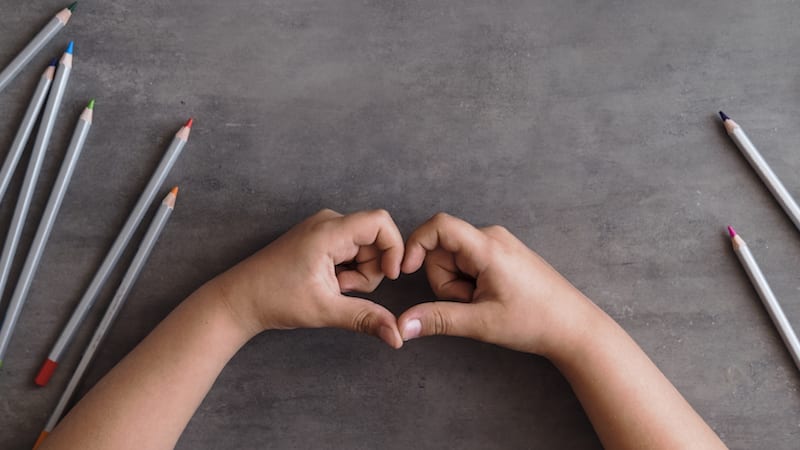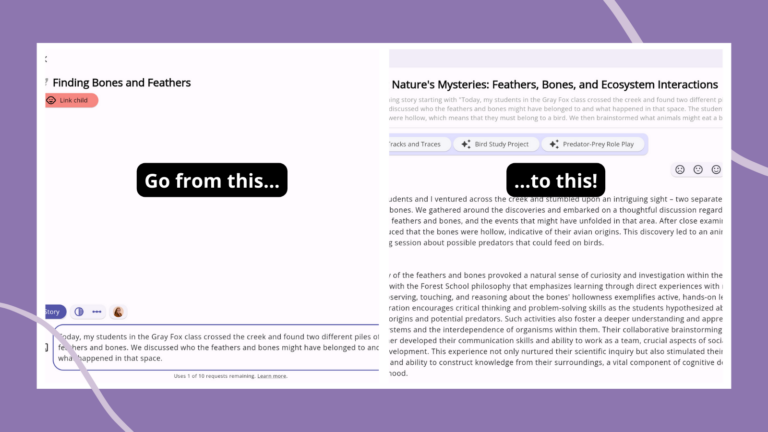Now that most of my rookie years are under my belt and I’m no longer WWF-style wrestling with classroom management on a daily basis, I’ve been thinking about my teaching and what I want students to leave my class knowing. I’m not talking about rhetorical devices or vocabulary. I’m talking about things like character. Relationships. What good leadership looks like.
There’s this cliché aphorism about learning you’ve probably heard: “The most important lessons in life cannot be learned in the classroom.” While it’s true that my most important lessons aren’t explicitly stated in my grade level’s learning standards, I regularly teach these life lessons through what we’re doing in the classroom. I teach persistence through rigorous revision, returning draft after draft to students for improvement. The importance of listening to others’ stories through Chimamanda Ngozi Adichie’s TED Talk, “The Danger of a Single Story.” The value of honesty and vulnerability by apologizing to my students when I mess up and asking them for feedback. At the end of the day and at the end of the school year, I—like many teachers I know—think the most important lesson we can teach our students is how to build a better world.
I recently polled my Facebook audience to see what their most important lessons were and how they taught them.
Respect
One of the biggest things I say to my kinders day in and day out, “When someone says no, it means no, and you have to respect it and stop.” If only adults learned this when they were in kindergarten! Bonus lesson: “If it’s not yours, don’t touch it,” because this saves me from going crazy!
—M. Elizalde, kindergarten
How to disagree
Civil discourse! When I taught government for juniors, we did weekly “thrash outs,” or debates, on a topic. They had to read an article that was pro and an article that was con about a topic. Students had to have three pieces of evidence to support their opinion. The first few were always rough. I modeled, and they practiced. At the end of the semester, students would say, “I hear what you’re saying, and here is why I disagree.”
—R. Jaunese, eighth grade social studies, Michigan
Curiosity and compassion
To treat others (and themselves) with compassion. Model it. Live it. Fail at it in front of them and own up to those mistakes. Work to shift your classroom “discipline” and grading policies to support it. Facilitate cooperative activities. Give students opportunities to actively listen to each other (e.g. classroom circles). Learn how to authentically address toxic masculinity, homophobia, racism, etc. Run out of ideas but keep trying to find new ones or new ways to implement old ones. Accept that you don’t have all the answers and that this is one of the hardest things you’ll ever try to teach.
—P. Bernard, middle school choir, Austin
Approach what’s unfamiliar with curiosity and listening rather than hostility or disbelief. In literature classes, we get to expose kids to lots of ideas and voices. I try to make sure they’re reading works by folks with similar backgrounds and experiences to themselves as well as works by folks with radically different ideas and experiences from their own. I also try to connect texts to current social justice issues and get them to think about how much (or little) has changed.
—L. Van Winkle, middle/high school English
Empathy
To be careful and thoughtful in what we choose to pay attention and respond to, rather than operate on our default settings. Basically, empathy empathy empathy. Depending on the group of students, we either read all or excerpts from “This is Water” by David Foster Wallace (HIGHLY recommended reading for those who haven’t). We always have really great discussions about it, and students are able to circle back to that idea when we talk about characters in the books we read or when they experience their own adversity. I also try really hard to model empathy in everything I do. This includes being very honest with them about my own struggles.
—K. Heurung, high school English, St. Louis
Empathy. I teach middle school in a suburban area. I’ve noticed that sometimes their worlds are small and their understanding of what other children may go through is limited. I try to read things with them that teach empathy and understanding to show them life that’s different than theirs. I read Chinese Cinderella by Adeline Yen Mah, which is a memoir about a young girl that was emotionally abused and abandoned by her family. We also read a collection of poems in a book titled Spinning Through the Universe, which is about a teacher and her class. Each student has their own gifts and hardships in the book. We also look at several other short pieces. A lot of great discussion comes out of these texts.
—R. Hill, seventh grade English, Indiana
Grace and forgiveness
The most important lesson that can be taught to my students would be to show grace. We all make mistakes, and rather than getting upset at someone for that mistake, it’s better to show grace and help the other to grow and learn! I teach it primarily through showing it in my own actions. Kids are kids, and they learn by making mistakes, which are often made, and instead of yelling and getting upset at them, it’s better to show them the grace they might not get at home.
—K. Smith, third grade teacher, North Carolina
The importance of diversity and inclusion
The most important lesson I can teach my students is that there are all kinds of people in this great big world, with backgrounds, families, religions, appearances, cultures, abilities, and opinions [different from] their own. I find it especially important as a teacher in a conflict area (I teach in Jerusalem, Israel), as people tend to get very insular about their thoughts and their place in society, and can dismiss everything that doesn’t fit their attitude just right. This idea permeates practically every lesson I teach, whether we’re talking about different countries, researching cultural customs, or just discussing what we think of certain issues.
—A. Sykora, EFL teacher grades 1–6, Jerusalem
How to fail
How to work through it when things go wrong. I teach it by talking through, out loud in front of them, rationally, what has gone wrong. I model developing a Plan B. I always try to show how to not get caught up on things not working out perfectly.
—H. Lowry, middle school, Ohio
Everything is a choice
I work at a second chance school for students who have been expelled or court ordered. I teach high school reading. The most important lesson that I teach is that everything is a choice. You may not always like the choice, but you still have one to make. Choices are not free from consequences, however. My students often believe that their behavior is a result of what is done to them. They believe they have no choices. I teach this day in and day out through everything we do and every conversation we have. My students who learn this go on to success. My students who don’t often wind up back with us or locked up. I truly believe this is the hardest lesson for my kids but also the one that will decide what kind of future they have.
—J. Leann, high school reading
Growth mindset
I think the most important lesson for my math intervention students is that everyone has academic challenges, but everyone can learn. And a growth mindset will get them there faster than a static one.
—Alexandra B., K–5 math intervention, Toledo, OH
The most important thing I can teach is that being engaged in a process (in growth) is more important than being right or perfect. A lot of my students at the beginning of the year don’t write because they’re afraid of doing it wrong. I use writer’s notebooks, flash drafting, and a focus on revision in an attempt to show students how much they already have to celebrate and the value of spending time exploring their own ideas.
—A. Boston, high school English
Awareness of others
The most important lesson I try to teach my students is to notice each other. I do a roll-call question every day so that each kid knows I see them. I say hello to each one of them and address them by name when they enter the room, and I repeat myself until each one responds. I also try to instill in them that saying “hello” or “thank you” when someone holds the door for you isn’t just being respectful. It’s also acknowledging someone’s presence and showing him/her that you see them. If I’m the one holding the door for them, I say “hello,” “good morning/afternoon,” “have a good day,” etc. as they walk through. I try to teach them that it can make such a big difference in someone’s day when even one person notices them.
—A. Ruckert, high school English, New Orleans
What is the most important lesson you teach? We’d love to hear about it in our WeAreTeachers HELPLINE group on Facebook.
Plus, what I wish my students knew.
Love, Teach teaches middle school English and writes about it sometimes at loveteachblog.com but more often on Facebook or Twitter. When she’s not teaching, she enjoys iced coffee and wearing clothes that feel like pajamas. Actually, she enjoy these things while she’s teaching, too.


